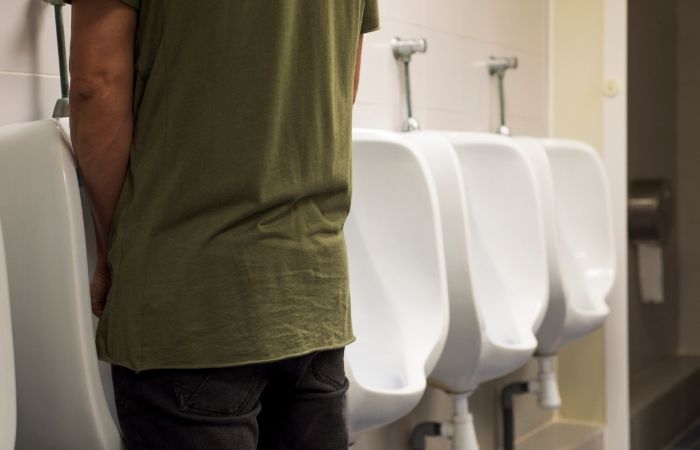Can You Get Chlamydia from Oral Sex? Symptoms, Risks, and Treatment
UTI or STD? Symptoms and Overlaps
One major reason for the issue in differentiating between UTI and STD is how close the signs or symptoms are. These are some lists of commonly noted signs and symptoms showing the closeness:
Signs of UTIs include
- Burning sensation - an unpleasant feeling in urination
- Frequent urges to urinate - urination might not be full
- Cloudy or odorous urine
- Soreness and stomach ache around your belly button area
Symptoms of STDs (e.g., chlamydia or gonorrhea)
- Incontinence
- Abnormal odor vaginal discharge
- Sores, redness, or itching in the vaginal area
- Discomfort during sexual intercourse
Where They Overlap
You can have pain when you urinate and a pain in your lower abdomen. Due to the similarities, many patients delay seeking the right diagnosis and treatment because they believe they are one and the same.

Diseases That People Commonly Mistake for UTIs and Why
There are many diseases whose symptoms are quite similar to that of UTIs, therefore making differential diagnosis quite hard. The following is a list of some of the most common pathological conditions mistaken to be UTI:
Sexually Transmitted Diseases (STDs)
- Why the Confusion: Most STDs, like gonorrhea and chlamydia, have similar symptoms to those of UTI, such as painful urination, a pain in the lower abdomen, and a strong urge to urinate.
- Key Differentiator: STDs often have additional symptoms that UTIs do not, such as atypical vaginal discharge, itching, or blisters.
Order Now $119.00 $294.00 Check Your STD Status in Minutes
Test at Home with Remedium
6-in-1 STD Test Kit




For all 6 tests
Vaginitis
- Why the Confusion: A burning sensation while urinating can be related to UTIs but may also occur with conditions such as yeast infections and bacterial vaginosis.
- Key Differentiator: Vaginitis often includes irritation in the vagina, a foul odor, and discharge, unlike UTIs.
Interstitial Cystitis (IC)
- Why the Confusion: IC, also known as "painful bladder syndrome," causes chronic pelvic pain, frequent urination, and a feeling of urgency, just like UTIs.
- Key Differentiator: Unlike UTIs, IC is not caused by bacteria, and urine tests will not show the presence of bacteria.
Kidney Stones
- Why the Confusion: Sudden onset of severe pain in the lower back or abdomen, blood in the urine, and frequent urination might mimic UTI symptoms.
- Key Differentiator: Kidney stones tend to present with nausea and severe pain that radiates into the groin, neither of which are typical symptoms for UTIs.
Bladder Cancer
- Why the Confusion: Tumors could result in frequent urination with bleeding.
- Key Differentiator: Pain-free urination, which, on the other hand, in cases of UTIs, can burn or cause some kind of pain.

Prostatitis (in Men)
- Why the Confusion: This condition inflames the prostate and can give rise to painful urination, pelvic pain, and a pressing need to urinate, mimicking UTIs.
- Key Differentiator: Prostatitis may cause flu-like symptoms such as fever and body aches, which are not seen in UTIs.
Pelvic Inflammatory Disease (PID)
- Why the Confusion: PID is an infection of the female reproductive system, usually arising from untreated STDs. It may cause pelvic pain and painful urination, just like UTIs.
- Key Differentiator: Unlike UTIs, PID generally involves fever, painful intercourse, and irregular periods.
Endometriosis
- Why the Confusion: A painful pathologic condition pressing on the bladder, endometriosis can cause pelvic pain, frequency, and discomfort mimicking the symptoms of UTI.
- Key Differentiator: Symptoms of endometriosis are cyclic and thus worse with a cycle around the time of menstruation, and symptoms are not based on any bacterial infection.
Diagnosis is Important
Misdiagnosis and treatment for other conditions as UTIs can lead to unnecessary suffering from the ailment. While antibiotics clear up UTIs, other conditions require different treatments.
Testing is the Answer
- Urine tests, blood work, or specific screening for sexually transmitted diseases will be used to rule in/distinguish between these ailments.
In such a case, if the symptoms of UTI do not improve or disappear, then one should see a doctor. These persistent symptoms may indicate bladder cancer or interstitial cystitis.
Being proactive with timely and proper treatment is the key to avoiding complications. Staying informed and vigilant about your health ensures you can seek medical advice when needed and avoid long-term damage.
Check Your STD Status in Minutes
Test at Home with Remedium6-in-1 STD Test Kit

 For Men & Women
For Men & Women Results in Minutes
Results in Minutes No Lab Needed
No Lab Needed Private & Discreet
Private & DiscreetOrder Now $119.00 $294.00
For all 6 tests
Infection Prevention: Be One Step Ahead
The dictum "prevention is better than cure" holds true here. Some steps can be undertaken to reduce the possibility of acquiring UTIs and STDs:
- Abstain or Safe Sex: Condoms or other protective measures during sex will help in preventing the infection of the STDs that eventually causes UTIs.
- Hygiene Post-Sexual Activity: A person should go to the urinal immediately after having sex and remove the infected bacterias that had entered the tract.
- Hydrate: Plenty of water intake would help to keep the urinary tract free from the threat of bacteria and other elements building up inside.
- Practice Regular Testing for STDs: As part of healthcare, include the testing of STDs in one's routine, particularly when sexually active. This can definitely help prevent further complications by making an early diagnosis.
Frequently Asked Questions
1.- Can one mistake a Urinary Tract Infection (UTI) with an STD?
Yes, UTIs and STDs share symptoms such as painful urination and abdominal discomfort, making them easy to confuse. Proper testing ensures accurate diagnosis.
2.- Can STDs cause UTIs?
Yes, bacteria from STDs such as chlamydia or gonorrhea can enter the urinary tract, leading to UTIs. Treating the underlying STD often resolves the UTI.
3.- What are the shared symptoms of STDs and UTIs?
Symptoms such as painful urination, abdominal discomfort, and increased urgency to urinate are common in both. However, other symptoms of STDs may include discharge, genital sores, or itching.
4.- Are STDs more common in women?
Yes, women are more prone to both STDs and UTIs due to their shorter urethra, which allows bacteria to reach the urinary tract more easily.
5.- Can mild UTIs resolve on their own?
Mild UTIs sometimes clear up without treatment, but if the symptoms persist or worsen, it is always advisable to consult a doctor.
6.- Can men get UTIs from STDs?
Yes, though less common, men can have UTIs from STDs such as chlamydia or gonorrhea. Symptoms may include painful urination and discharge.
7.- Should I get tested for both UTIs and STDs if I'm unsure?
Yes. Testing for both ensures proper diagnosis and treatment.
8.- What if a person has a UTI or STD and leaves them untreated?
Left to themselves, UTIs migrate to the kidneys. Untreated STDs at times result in pelvic inflammatory disease that may cause infertility and other complications later in life.
9.- Do at-home STD test kits detect infections that can be similar to UTIs?
Yes, home test kits for STDs are able to detect such infections, like chlamydia and gonorrhea, which can show symptoms similar to UTIs.
10.- How can I avoid both UTI and STD?
Abstain from unsafe sex, drink plenty of water, maintain hygiene, and go for regular testing for STDs. These precautions drastically lower the risk for both.
Take Action!
Your health is in your hands. Recognizing symptoms early and taking action can prevent long-term complications. If you’re experiencing symptoms or simply want peace of mind, consider regular testing. Our at-home STD test kits offer a private, convenient solution to stay on top of your sexual health. Don’t wait—act now to protect yourself and your future.
Sources
1.- UTIs and STDs: How to Differentiate Symptoms
2.- Is It UTI or STD? Discerning the Differences
3.- UTI vs. STI: Key Differences
4.- UTI and STD: Symptoms and Causes










